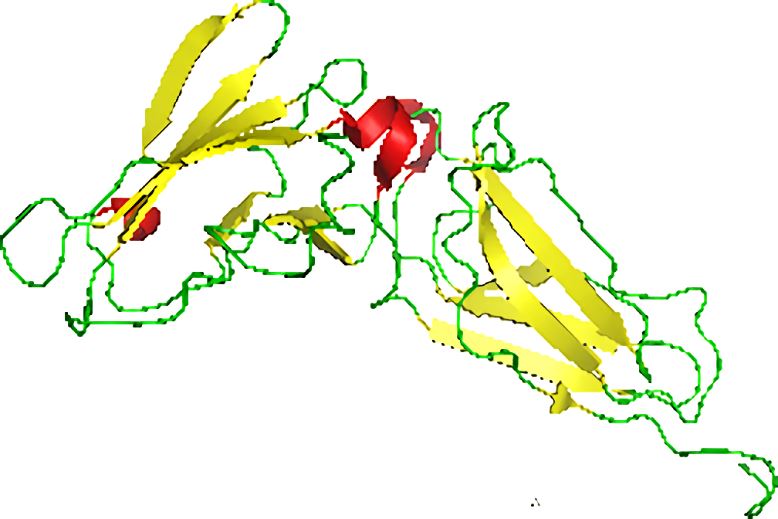IFNAR
 Type I interferons (IFNs) 1 consisting of α and β subtypes, are a multifunctional cytokine family capable of inhibiting cell proliferation and viral replication, in addition to modulating cellular immune functions. The type I IFN receptor consists of at least two distinct subunits IFNAR1 and IFNAR2. IFNAR1 is the low-affinity subunit, originally cloned in 1990, and is composed of four fibronectin type II-like (FNII-like) subdomains, termed SD1-4. Type I IFNs bind SD1-3 with a typically high binding affinity which is between 0.5–5 μM; IFNα1 and IFNβ are exceptions with higher binding affinities, up to 220 nM and 100 nM, respectively. Type I IFNs have a binding association rate of 5x105M/s with a variable dissociation rate that determines type I IFN subtype affinity for IFNAR1. IFNAR2 was originally cloned in 1994. It is the high-affinity subunit, composed of two FNII-like subdomains, termed D1 and D2. Type I IFNs bind D1 and D2 with a typical binding affinity between 0.4-5 nM; IFNβ binds at a slightly lower affinity (0.1 nM).
Type I interferons (IFNs) 1 consisting of α and β subtypes, are a multifunctional cytokine family capable of inhibiting cell proliferation and viral replication, in addition to modulating cellular immune functions. The type I IFN receptor consists of at least two distinct subunits IFNAR1 and IFNAR2. IFNAR1 is the low-affinity subunit, originally cloned in 1990, and is composed of four fibronectin type II-like (FNII-like) subdomains, termed SD1-4. Type I IFNs bind SD1-3 with a typically high binding affinity which is between 0.5–5 μM; IFNα1 and IFNβ are exceptions with higher binding affinities, up to 220 nM and 100 nM, respectively. Type I IFNs have a binding association rate of 5x105M/s with a variable dissociation rate that determines type I IFN subtype affinity for IFNAR1. IFNAR2 was originally cloned in 1994. It is the high-affinity subunit, composed of two FNII-like subdomains, termed D1 and D2. Type I IFNs bind D1 and D2 with a typical binding affinity between 0.4-5 nM; IFNβ binds at a slightly lower affinity (0.1 nM).
The IFNAR1 chain appears to be involved primarily in signal transduction, while the IFNAR2 chain plays a role both in ligand binding and signal transduction. The molecular weight of the IFNAR2 chain was approximately 50 kDa (IFNAR2.1), having a truncated cytoplasmic domain due to alternative mRNA splicing. In most human cells IFNAR2.1 is expressed at low levels relative to the full-length IFNAR2.2 chain.
If you can’t find your product on this list? Please directly send email to
For Research Use Only. NOT FOR CLINICAL USE.
Online Inquiry
Welcome! For price inquiries, please feel free to contact us through the form on the left side. We will get back to you as soon as possible.
